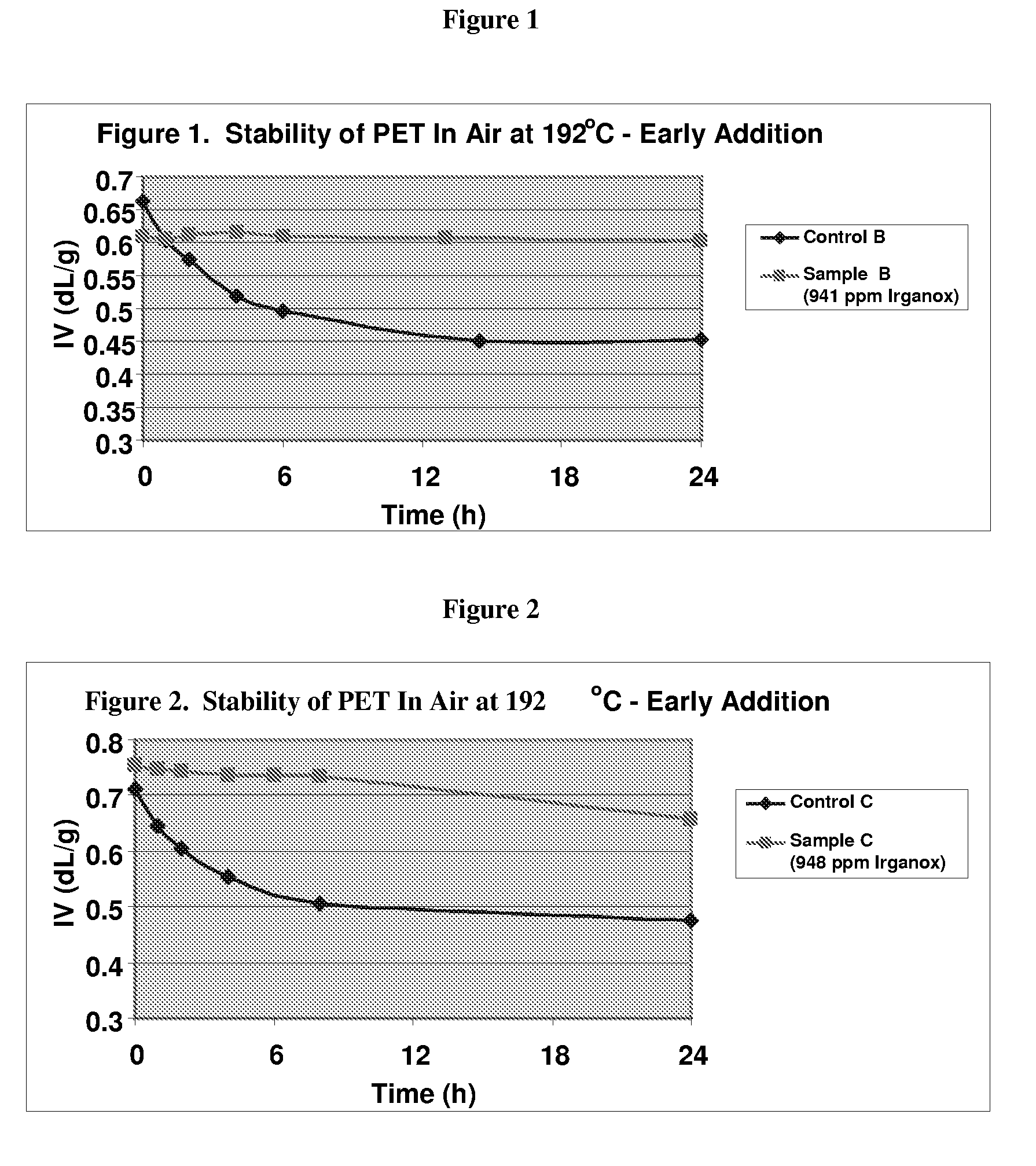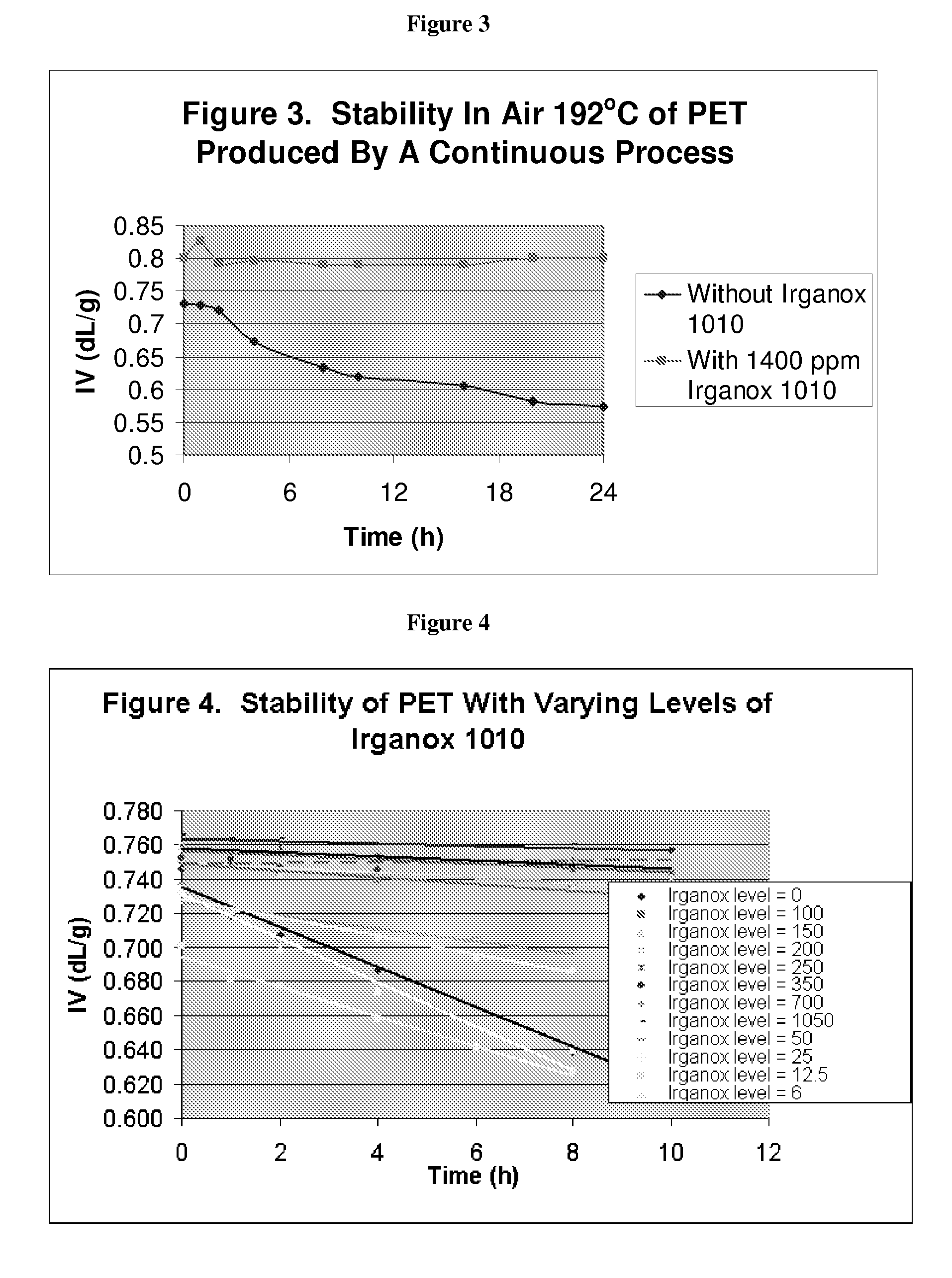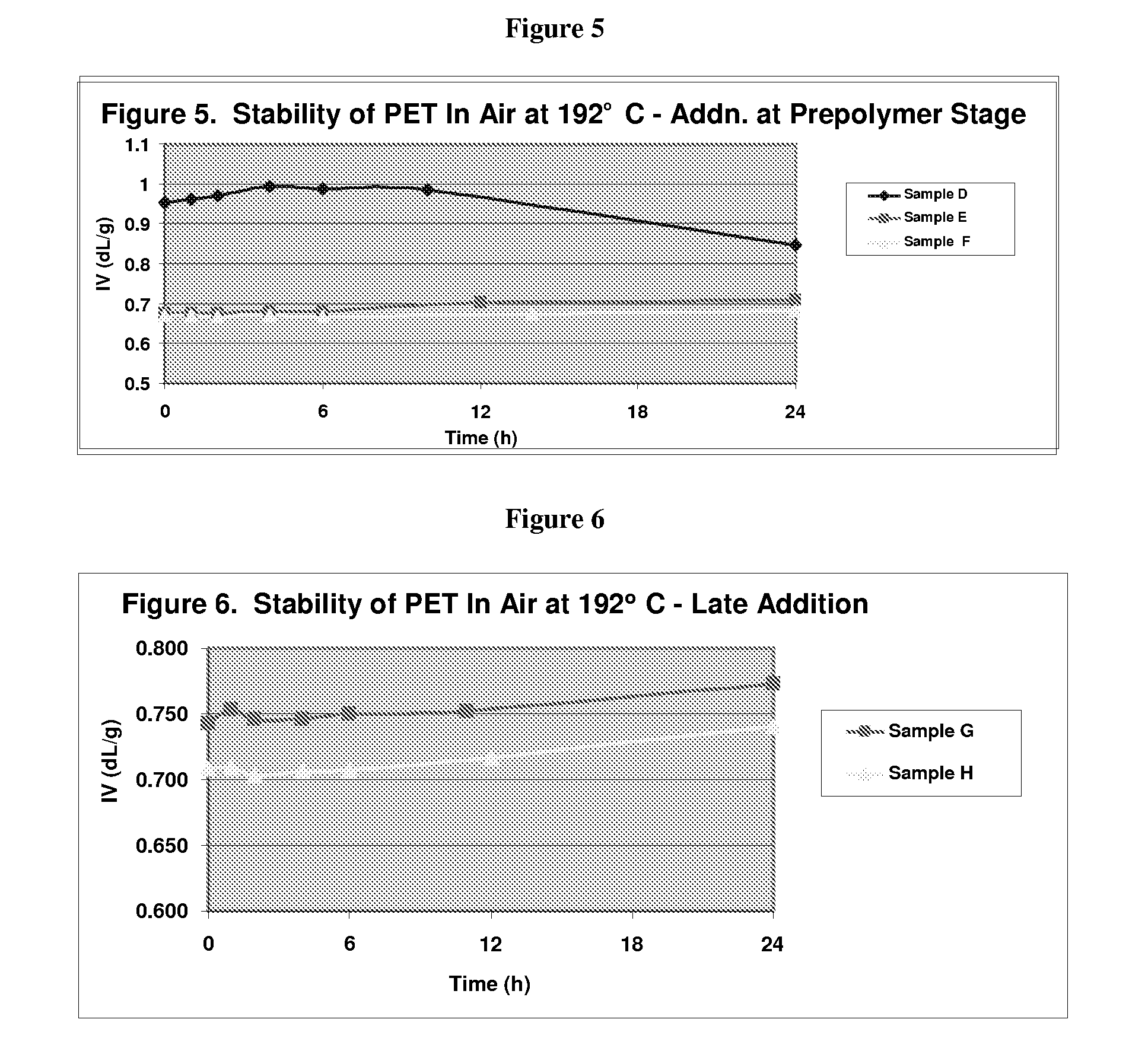Polyester melt phase products and process for making the same
- Summary
- Abstract
- Description
- Claims
- Application Information
AI Technical Summary
Benefits of technology
Problems solved by technology
Method used
Image
Examples
example 1
Stabilizer Added at the Beginning in a Laboratory Procedure
[0084]Synthesis of PET in the laboratory consists of two steps: esterification of terephthalic acid (TPA) and isophthalic acid (IPA) with ethylene glycol (EG) in a Parr high pressure reactor; and polymerization of the resulting oligomer.
[0085]Step 1) Esterification: A two liter reaction vessel constructed of stainless steel was charged with TPA, IPA (2 mole % relative to PTA) and EG, and purged with nitrogen. Trimethyl ammonium hydroxide was added as a diethylene glycol (DEG) suppressant.
[0086]The heating, agitation, and pressure were all controlled by a distributed control system. The vessel was then heated to 245° C. with constant agitation under 40 psi of nitrogen. As the reaction proceeded, water was removed from the reactor and was collected in a receiving flask. The extent of the reaction was monitored by the mass of water removed.
[0087]Upon completion, the pressure was ramped down to atmospheric pressure. The molten o...
example 2
Stabilizer Added after Esterification in a Continuous Process
[0093]Irganox 1010 was added to a continuous TPA-based polymerization process. The Irganox 1010 was added as a slurry in ethylene glycol at a process point between esterification and prepolymerization. The target level of Irganox 1010 was 1400 ppm. The molar ratio of the slurry of TPA / IPA / EG was 1.0 / 0.02 / 1.5. The esterification was conducted at 270° C. and 25 psig. The prepolymerization was conducted in two stages from 275 to 285° C. and from a slight positive pressure to about 100 mm vacuum. The final polymerization was conducted at 280-290° C. at about 2 mm vacuum. Phosphoric acid (50 ppm as P) was added when the target IV had been obtained and the vacuum was removed. The IV of the resulting PET was 0.80 dL / g.
[0094]FIG. 3 shows the differences in IV between a control made by the same process and having the same composition (although starting IV 0.73 dL / g for the control sample) as sample but without Irganox and the sampl...
example 3
Stabilizer Added in the Middle Phase
[0096]PET oligomer was prepared as described for Control A in Example 1, Tables 1 and 2. The oligomer (102.9 g) was then placed in a 500 mL round bottom flask equipped with a nitrogen inlet and mechanical stirrer. A lithium-aluminum catalyst mixture (0.40 g of a solution containing LiOH (2300 ppm Li) and aluminum isopropoxide (3000 ppm Al) in ethylene glycol) and 0.12 g Irganox 1010 were added to the flask. All polymerizations were conducted using a distributed control system under the conditions shown in Table 6 below. Target levels for the finished polymer were 9 ppm Li, 12 ppm Al, and 1200 ppm Irganox 1010 (Sample D). A second polymerization was conducted under the same conditions except that phosphoric acid was added near the end of polymerization (Table 6, stage 10) at a target level of 100 ppm (Sample E). A third polymerization was completed in which Irganox 1010 was added to the oligomer and was targeted at 800 ppm, and the phosphoric acid ...
PUM
| Property | Measurement | Unit |
|---|---|---|
| Fraction | aaaaa | aaaaa |
| Fraction | aaaaa | aaaaa |
| Fraction | aaaaa | aaaaa |
Abstract
Description
Claims
Application Information
 Login to View More
Login to View More - R&D Engineer
- R&D Manager
- IP Professional
- Industry Leading Data Capabilities
- Powerful AI technology
- Patent DNA Extraction
Browse by: Latest US Patents, China's latest patents, Technical Efficacy Thesaurus, Application Domain, Technology Topic, Popular Technical Reports.
© 2024 PatSnap. All rights reserved.Legal|Privacy policy|Modern Slavery Act Transparency Statement|Sitemap|About US| Contact US: help@patsnap.com










